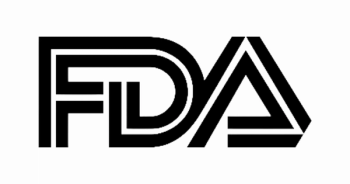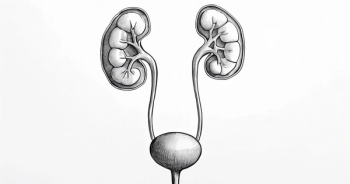
FDA Grants Durvalumab Breakthrough Status for Bladder Cancer
The FDA has granted a breakthrough therapy designation to durvalumab as a treatment for patients with PD-L1 positive inoperable or metastatic urothelial bladder cancer following progression on prior treatment with a platinum-based regimen.
The breakthrough designation, which is meant to expedite development of therapies that offer substantial benefits over existing options, was based on early findings from the phase III DANUBE study that explored the immunotherapy across several solid tumors. Findings from the urothelial bladder cancer arm of the large trial have not yet been released, though data from the study were submitted for presentation at a future medical meeting, according to AstraZeneca.
The study, which launched in July 2015, is currently comparing frontline durvalumab monotherapy against durvalumab plus the CTLA-4 inhibitor tremelimumab or standard of care chemotherapy for patients with metastatic bladder cancer. The primary endpoint of the study, which hopes to enroll 525 participants, is progression-free survival. The estimated primary completion date is November 2017 (NCT02516241).
“Metastatic bladder cancer is an area of enormous unmet medical need. We are encouraged by this breakthrough therapy designation,” Robert Iannone, senior vice president, Head of Immuno-Oncology, Global Medicines Development at AstraZeneca, said in a statement. “We look forward to working closely with the FDA to bring durvalumab to bladder cancer patients as soon as possible.”
The study that was the basis for the designation, known as Study 1108, was among the first to assess durvalumab in humans. The trial began with a dose escalation phase followed by an expansion cohort, which spanned across multiple advanced solid tumors, including nonsmall cell lung cancer (NSCLC), squamous cell carcinoma of the head and neck (SCCHN), and bladder cancer.
Across the course of the study, which was initiated in September 2012, the PD-L1 inhibitor was administered intravenously every 2, 3, or 4 weeks. In a dose expansion cohort that included at least 16 types of cancer, durvalumab is being administered at 10 mg/kg every 14, 21, or 28 days.
The dual primary endpoints of the study were to assess dose-limiting toxicities, adverse events (AEs), serious AEs, and antitumor activity. Secondary endpoints focused on objective response rate (ORR), duration of response, progression-free survival, and overall survival (OS).
In findings from the NSCLC cohort of Study 1108 (n = 200),1the ORR across the full population was 16% with a disease control rate of 42% at 12 weeks. In patients with PD-L1positive disease (>25% staining; n = 84), the ORR was 27%. In those identified as negative for the biomarker (<25% staining; n = 92), the response rate was 5%. Those with no staining were not evaluable.
Preliminary data from the study suggested that patients with PD-L1positive tumors experienced improvements in OS with durvalumab compared with the negative group. In this early data, the median OS in the negative arm was 8.9 months and was not yet reached in the positive group.
Half of patients treated with durvalumab experienced an AE of any grade. Overall, 8% of patients experienced a grade 3/4 AE, 5% of which led to discontinuation. There were no reported cases of drug-related colitis and no grade 3/4 drug-related pneumonitis. The most common all-grade AEs were rash (8%), diarrhea (7%), pruritus (4%), hyperthyroidism (4%), and hypothyroidism (4%).
There are currently 7 phase III studies looking at durvalumab in settings that range from adjuvant therapy to the third-line setting for patients with NSCLC. These studies are assessing the medication as a monotherapy and in combination with tremelimumab or theEGFR T790M-targeted therapy osimertinib (Tagrisso).
In addition to bladder cancer and NSCLC, there are currently 2 phase III studies being prepared for patients with SCCHN. In these studies, durvalumab is being explored as a monotherapy and with tremelimumab. Additionally, a phase II study is looking at the medication as a second-line therapy in PD-L1negative patients with SCCHN.
In data from the SCCHN expansion cohort of Study 1108 (n = 62),2the ORR for durvalumab at 10 mg/kg every 2 weeks was 11% across the full population. In the PD-L1positive group (n = 22), the ORR was 18% compared with 8% in the biomarker negative arm (n = 37). At this analysis, a majority of the responses were ongoing.
In this cohort, 61% of patients experienced a drug-related AE, 10% of which were grade 3/4. There were no treatment-related incidences of colitis or grade 3/4 pneumonitis. All-grade diarrhea occurred in 8% of patients, followed by rash, maculopapular rash, and pruritus in 7% each.
Early reports from the phase III ATLANTIC trial have corroborated the clinical efficacy seen in Study 1108 to some degree. The ATLANTIC trial assessed durvalumab in patients with heavily pretreated metastatic PD-L1positive NSCLC.
Despite signs of activity and tolerability, however, the company noted that the study was unlikely to support a regulatory filing for the medication as a single-agent. At this time, AstraZeneca has not yet released findings from the study. Results from ATLANTIC are being prepared for presentation at an upcoming medical meeting.
“As we have seen in other studies, durvalumab has demonstrated expected clinical activity and durable response in these heavily pretreated patients,” Sean Bohen, executive vice president, Global Medicines Development and chief medical officer at AstraZeneca, said in a statement. “We now believe it is unlikely that ATLANTIC can be used for regulatory submission as a monotherapy, but we will make that determination following a full analysis of the data.”
References
- Rizvi NA, Brahmer JR, Ou S-HI, et al. Safety and clinical activity of MEDI4736, an anti-programmed cell death-ligand 1 (PD-L1) antibody, in patients with non-small cell lung cancer (NSCLC). J Clin Oncol. 2015;33 (suppl; abstr 8032).
- Segal NH, Ou S-HI, Balmanoukian AS, et al. Safety and efficacy of MEDI4736, an anti-PD-L1 antibody, in patients from a squamous cell carcinoma of the head and neck (SCCHN) expansion cohort. J Clin Oncol. 2015;33 (suppl; abstr 3011).









































